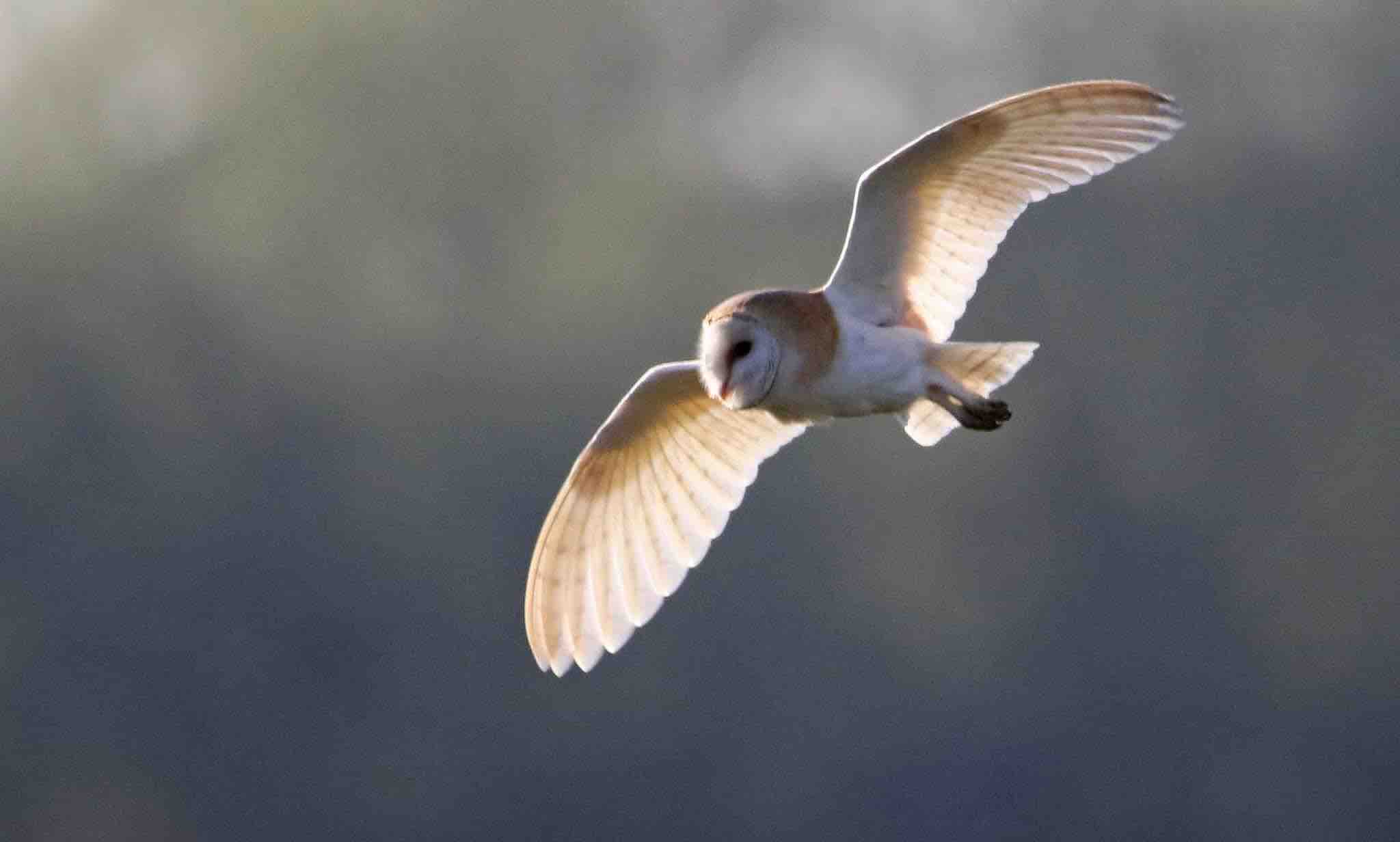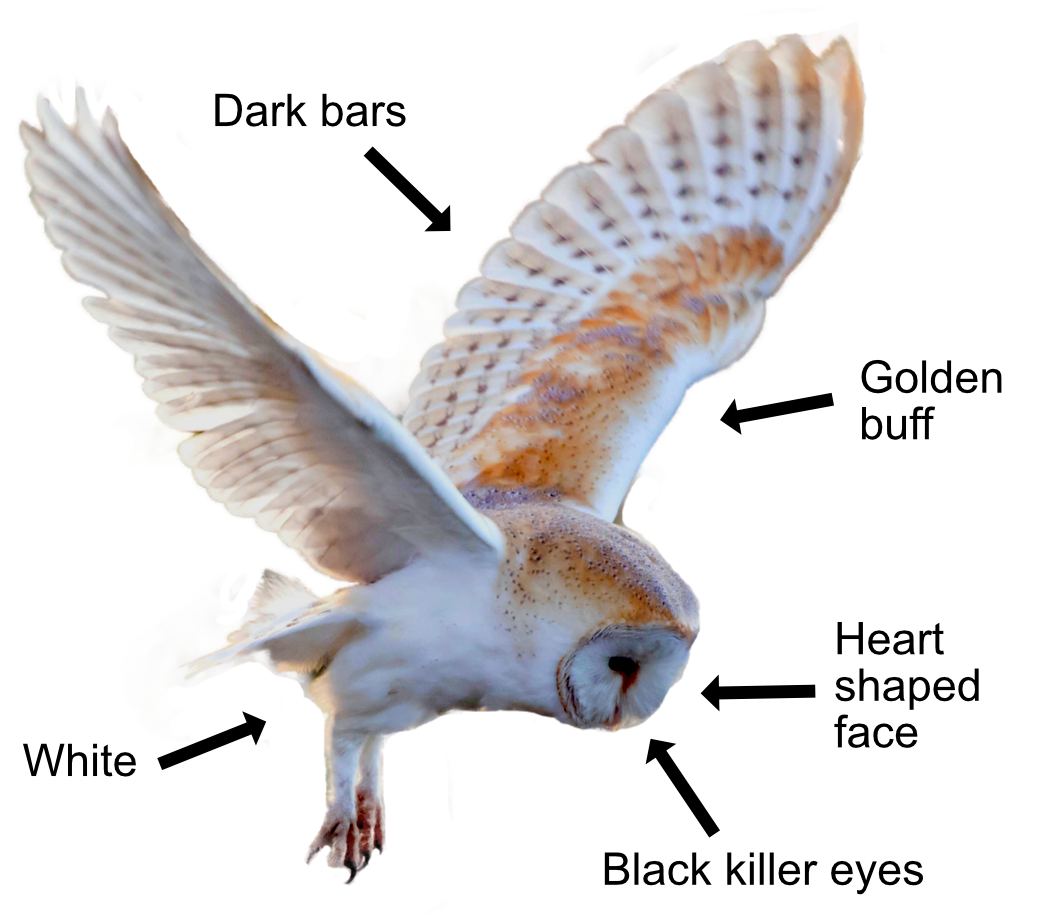
The Barn Owl is the most widely distributed species of owl and one of the most widespread of all birds, though you wouldn't know it as it mainly hunts early evening and at night when you are in bed. It is a midnight ninja assassin, gliding silently on stealth wings. You may be lucky and see one during the day in the winter or after a lot of bad weather when it has to hunt in daylight for food. The Barn Owl can't hunt when it is raining.
The Barn Owl is the white owl of farmland and the countryside. It is a pale, sandy, golden buff colour above, white underneath and has dark bars on the wings. The face is heart-shaped with black killer eyes. Female Barn Owls are typically darker than males and have more speckling on their flanks and underwing. The Barn Owl's face shape helps it direct sound to its ears so it can pinpoint its prey at night. The wings have a soft fringe along the outside of the flight feathers so they are silent when flying and the owl can swoop down on their prey unannounced. The Barn Owl flies slow and low over the ground and will frequently hover before diving into grass onto some helpless victim. They are not particularly vocal. A drawn out screech made by the male is only likely to be heard during the early stages of the breeding season. It sounds a bit like a baby being strangled.

The Barn Owl feeds on small mammals like mice, voles, shrews, and small rats. They like places with areas of rough grassland and woodland edge, where there are lots of field voles to be found (their favourite food). The availability of food shapes their breeding behaviour. They may not have young when the small mammal population is at a low. During courtship the male feeds the female lots of juicy voles before she becomes interested. Like most girls, she enjoys being taken out on a dinner date.
The Barn Owl nests in very large holes within mature trees, on the ledges found in old agricultural buildings, or in owl boxes. Over 25% of the breeding population now uses owl boxes as many old barns have been lost to barn conversions. They lay 4-7 eggs at 2-day intervals which each hatch after 30 days. The resulting brood of chicks can vary in age by as much as two weeks! They do this to increase the chances of at least some chicks surviving if food availability becomes low during the chick rearing period; the oldest and largest chicks will receive food first, at the expense of the last of the brood. The youngsters can fly after 50 days and depend on mum and dad for a further 5 weeks before they disperse to find their own territories. Despite the long child rearing period, Barn Owls often have two broods.
There are 4000 pairs in Britain. Populations have recovered somewhat from an earlier period of decline and have benefited from the erection of nest boxes and habitat management. Their Latin name is 'tyto alba' which literally means 'white owl' from the Greek 'tyto' for an owl and Latin 'alba' for 'white'. Barn Owls are known by many different nicknames including 'ghost owl', 'church owl' and 'screech owl'.